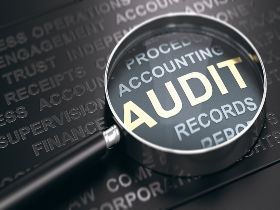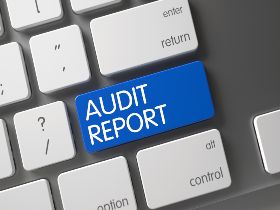
820.181 – Device Master Record
Each manufacturer shall maintain device master records (DMR’s). Each manufacturer shall ensure that each DMR is prepared and approved following 820.40. The DMR for each type of device shall include, or refer to the location of, the following information:
Device specifications including appropriate drawings, composition, formulation, component specifications, and software specifications;
Production process specifications including the appropriate equipment specifications, production methods, production procedures, and production environment specifications;
Quality assurance procedures and specifications, including acceptance criteria and the quality assurance equipment to be used;
Packaging and labeling specifications, including methods and processes, used; and
Installation, maintenance, and servicing procedures and methods.
Why the FDA Give High Attention to 21 CFR 820.181 section?
The FDA identified a terrible trend he is starting to see among device manufacturers: The failure to maintain the Device Master Record (DMR) or, in some cases, the complete inability to create one.
Let's begin by stating that FDA believes that the DMR is such a vital record; it has its own section under 21 CFR, Part 820.181 – Subpart M (Records). We struggle to understand how a device manufacturer can manufacture a device without an accurate DMR. Yes, we clearly understand that with technology and creativity, anything is possible. However, the agency is unwilling to ponder the possibilities, so investigators are issuing Form 483 Observations for failing to comply with §820.181 (Device Master Record). In some cases, the failure to comply with §820.181 is finding its way into warning letters, an excellent, attention-grabbing tool employed by the FDA. It’s the agency’s equivalent of: “CAN YOU HEAR ME NOW?” Folks, you have to remember, compliance with the FDA’s Quality System Regulation (QSR) is not rocket science. Compliance is rather “prosaic” (look-it-up) but a necessary evil if you want to enter medical devices into commerce in the United States.

ORCANOS QMS Makes DMR & DHF The Easiest Part Of Design Of Design Control
Orcanos QMS makes it easier than ever to compile your DMR/DHF just in time for an FDA or ISO audit. The DMR/DHF regulations allow medical device companies to present their DMR/DHF as a document that references the product development documentation for your medical device. Orcanos QMS acts as a secure reference library that holds all of your product development documentation where you can quickly and easily link to it from your DMR/DHF. Instead of assembling, photocopying, and perpetually updating a physical file folder with hundreds of pages, medical device companies can produce and update one DMR/DHR record for their DMR/DHF that contains references to the documents in the QMS. With Orcanos QMS, creating and maintaining a DMR/DHF is so easy, it's practically done for you.

What is DMR? (Device Master Record)
According to 21 CFR 820.181, Each manufacturer shall maintain device master records (DMR's). Each manufacturer shall ensure that each DMR is prepared and approved in accordance with 820.40. The DMR for each type of device shall include, or refer to the location of, the following information:
- Device specifications including appropriate drawings, composition, formulation, component specifications, and software specifications;
- Production process specifications including the appropriate equipment specifications, production methods, production procedures, and production environment specifications;
- Quality assurance procedures and specifications including acceptance criteria and the quality assurance equipment to be used;
- Packaging and labeling specifications, including methods and processes, used; and
- Installation, maintenance, and servicing procedures and methods.

What is DHF? (Design History File)
THE DESIGN HISTORY FILE (DHF) WAS FIRST MANDATED BY THE UNITED STATES FDA IN 1990 AS PART OF THE SAFE MEDICAL DEVICES ACT; IT CONTAINS ALL OF THE PRODUCT DEVELOPMENT DOCUMENTATION PERTAINING TO A FINISHED MEDICAL DEVICE.
The creation of a DHF is the last step in the design controls process mandated by the FDA in 21 CFR Part 820. While the majority of the medical device compliance regulations enforce the establishment of policies and procedures for enforcing quality standards, the DHF is primarily an organizational tool meant to show that the design controls process was properly followed and documented throughout product development. Design controls are one of the core processes of the overall quality management system (QMS) mandate, and the presence, completeness, and accuracy of your DHF go a long way towards helping you pass your next FDA audit.
Course Curriculum
Virtual Auditor
Orcanos Compliance Engine provides a “Virtual Auditor” that scan the compliance of project data in respect for specific industry regulation, and quality best practice, such as compliance with ISO 14971, IEC 62304 and ISO 13485 and more.
Orcanos Compliance Engine is a flexible tool that allows defining any regulation in the tool or in a simple Excel or Google Sheet, defining the standard, section, classification in case of medical device (CLASS I, II, III), Remediation, and many other parameters, and then import these regulations into Orcanos ALM and QMS platform and connect it to electronic records.
Orcanos QMS Compliance Engine then scans project data based on the specific regulations, and specific logic attached to it and shows the faults in an executive summary. Together with Orcanos dashboard and notification mechanism, you would have better control and monitoring.

Related Courses
Students who have taken this course also taken the following course topics.
